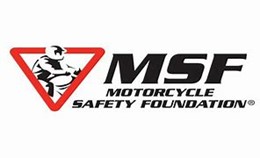Modern Advancements in Motorcycle Safety Technology

Motorcycles offer a unique sense of freedom and adventure, but with that thrill comes a higher level of risk compared to other vehicles on the road. As the number of motorcycle enthusiasts continues to grow, so does the demand for cutting-edge safety technology that can protect riders and reduce accidents. Thankfully, according to the Motorcycle Safety Foundation, the technological advancements in motorcycle safety technology are making the roads safer and more enjoyable than ever before.
- Anti-lock Braking System (ABS)
-
- Function: Prevents the wheels from locking up during braking, which helps maintain control during emergency stops.
- Benefit: Reduces the likelihood of skidding and improves stopping distance.
- Traction Control System (TCS)
-
- Function: Monitors and adjusts the power delivery to the wheels to prevent loss of traction, especially during acceleration on slippery surfaces.
- Benefit: Enhances stability and control, particularly in adverse weather conditions.
- Electronic Stability Control (ESC)
-
- Function: Helps maintain stability by detecting and reducing loss of traction or skidding.
- Benefit: Improves safety during sudden maneuvers or when riding on slippery roads.
- Motorcycle Airbag Systems
-
- Function: Deploys an airbag to protect the rider in the event of a collision.
- Benefit: Reduces the impact on the rider’s body during a crash.
- Cornering ABS
-
- Function: An advanced version of ABS that takes into account the lean angle of the motorcycle to optimize braking force during cornering.
- Benefit: Enhances safety when braking in a curve or turn.
 Adaptive Headlights
Adaptive Headlights
-
- Function: Headlights that adjust their angle and intensity based on the bike’s speed, lean angle, and road conditions.
- Benefit: Improves visibility at night and during cornering, making it easier to see and be seen.
- Blind Spot Detection
-
- Function: Alerts the rider to vehicles in their blind spot using sensors.
- Benefit: Increases awareness of surrounding traffic, reducing the risk of lane-change accidents.
-
 Tire Pressure Monitoring System (TPMS)
Tire Pressure Monitoring System (TPMS)
-
- Function: Monitors the air pressure in the tires and alerts the rider if it falls below a safe level.
- Benefit: Helps prevent tire-related issues, such as blowouts or poor handling, which can lead to accidents.
- Rider Assistance Systems (RAS)
-
- Function: Includes features like automatic emergency braking, collision warning, and lane-keeping assistance.
- Benefit: Provides additional support in avoiding collisions and maintaining safe riding conditions.
As technology continues to evolve, the future of motorcycling is bright—and much safer. These innovations are not just about preventing accidents; they’re about enhancing the overall riding experience, giving riders peace of mind so they can focus on the joy of the ride.
We at the Herd Law Firm, PLLC, are motorcycle riders, too! We support bikers and motorcyclists injured on the road, and have successfully represented such victims seeking the assistance and compensation they so need and deserve.
8/15/2024










